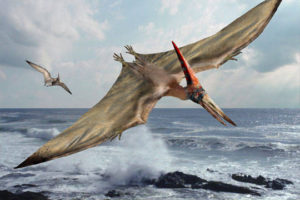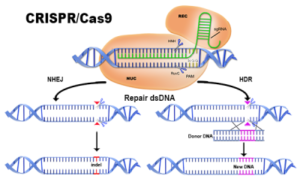With the Year of Our Lord, Two Thousand Seventeen coming to a close, Gildshire recognizes the incredible year it has been. Social and political upheaval dominates the news. We are left to wonder, not if the world will never be the same, but whether we will recognize what was before in the face of what is now. Not least among the way things are new is in the world of Science. Here are just a few of 2017’s important scientific discoveries and breakthroughs.
Water Harvester: Among the many doomsday scenarios about which we are concerned (disappearing bees, the Earth heating up at rates much faster than we thought, etc.) the issue of water is paramount. Simply put, in much of the world fresh water is scarce! Researchers at the University of California-Berkeley may have a workable solution. Their water harvester pulled three quarts of water out of 20% humidity atmosphere during testing. It’s all alpha-testing stage right now, but a thirsty land awaits.
Ninety-One Volcanoes Discovered in Antarctica: While the rest of us are afraid of slow-roasting under climate change, scientists from Edinburgh University bring more bad news. Ninety-one volcanoes are at rest under the Antarctic ice sheet. If just one were to blow, the ruination of Antarctica could result.
New Dead Sea Scroll Cave: Credit Hebrew University of Jerusalem for this one. It had been six decades since the last Dead Sea Scroll cave discovery. The researchers found broken storage jars, and a leather strap and cloth. The latter contained the scrolls.

Objects in the mirror may be larger than they appear.
Terry the Pterosaur: Researchers have long-sought a winged creature that filled the role of predator to juvenile dinosaurs. Apparently, he roamed the steppes of Mongolia in the Late Cretacious era. Terry’s wingspan was 36-feet long. Imagine him on the telephone wire outside your house.
North America’s Oldest Village: Near Nunsti Provincial Park in British Columbia, researchers from the University of Victoria discovered something special. Apparently, some folks made a home there, 14,000 years ago. How do we know that people lived there? The discoveries include fish hooks, spears, charcoal flakes, and tools used for lighting fires.
A Rat-Like Mammal Co-Existed With the Dinosaurs: Upending long-held belief to the contrary, evidence now indicates that mammals and dinosaurs existed side by side. We know now that tiny mammals lived in the shadow of the dinosaurs for more than 150 million years. This rat is the closest mammalian ancestor to humans found thus far. Hooray, for undergraduate students! Grant Smith from Portsmouth University in England made this important scientific find.
A Medicine for Curing Alcoholism? This one is a long way from your grocer’s shelf, but hope may be on the horizon. Researchers have long asked why drinking leads some to alcoholism while others are not afflicted. It turns out a locus in a certain gene responds negatively to alcohol consumption. A gene variant, taken orally, reduces the desire to drink. Potentially, this is great news for other drivers on the highway and family members who love imbibers. However, the news wouldn’t be quite so good for Seagrams.
Rendering Bacteria Harmless: It turns out that bacteria have a sense of touch. It’s how they adhere to body parts. Research indicates bacteria can be tricked into believing there are surfaces within the human body where there are none. The bacteria attach to, literally, nothing, and flush out of the system. Bacterial pneumonia, currently a common cause of death, could become nearly extinct.
A Brand New Planet? Just when we were mourning Pluto, here comes Gliese 1132b (Whoever names these things could use some creative help!) While much further from Earth than Pluto, this new little guy orbits a red dwarf star, and has an atmosphere. He sits 39 light-years from your couch. Because of its proximity to Earth, Gliese 1132b is accessible to folks scanning the sky through powerful telescopes.

The most important scientific discovery of 2017? We think so.
U.S. Scientists Edited the Human Embryo: We may have saved the most important scientific breakthrough for last. Researchers from Oregon Health and Science University in Portland successfully edited the genetic makeup of a human embryo. Using a technique called CRISPR ( Clustered Regularly Interspaced Short Palindromic Repeats) the scientists paved the way to correcting defective genes that cause some diseases.
How is that for some good news? Current events may leave you with a migraine, but all of this tells us brighter days are ahead. Enjoy your Holidays.




